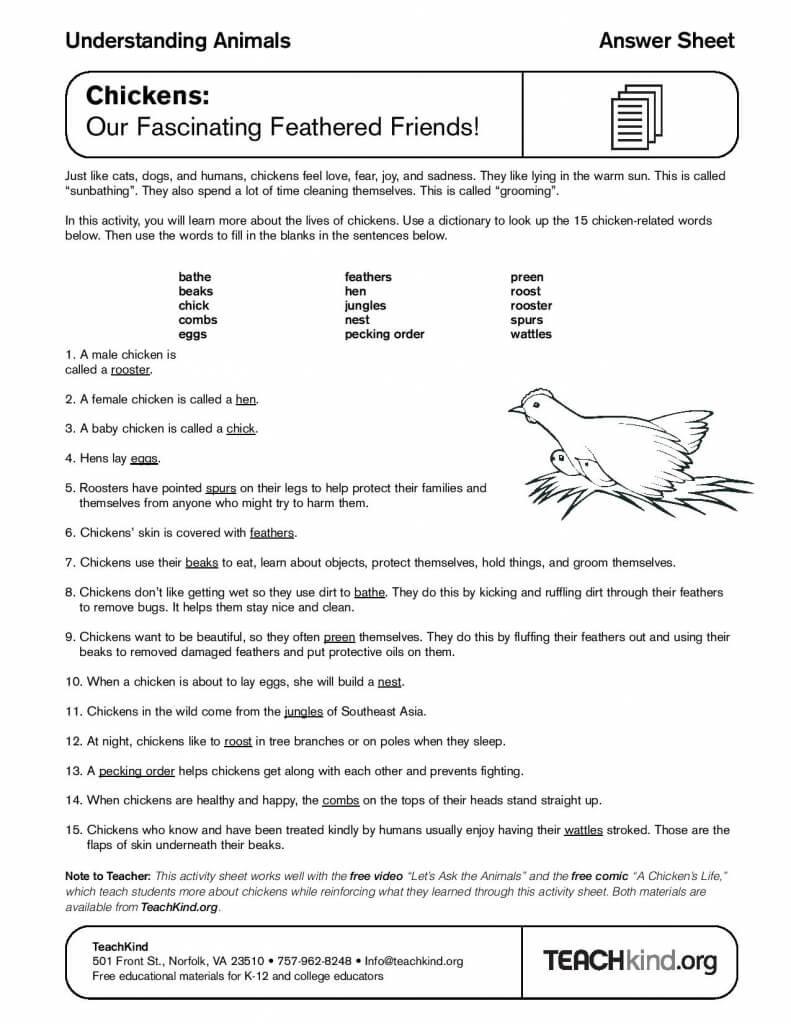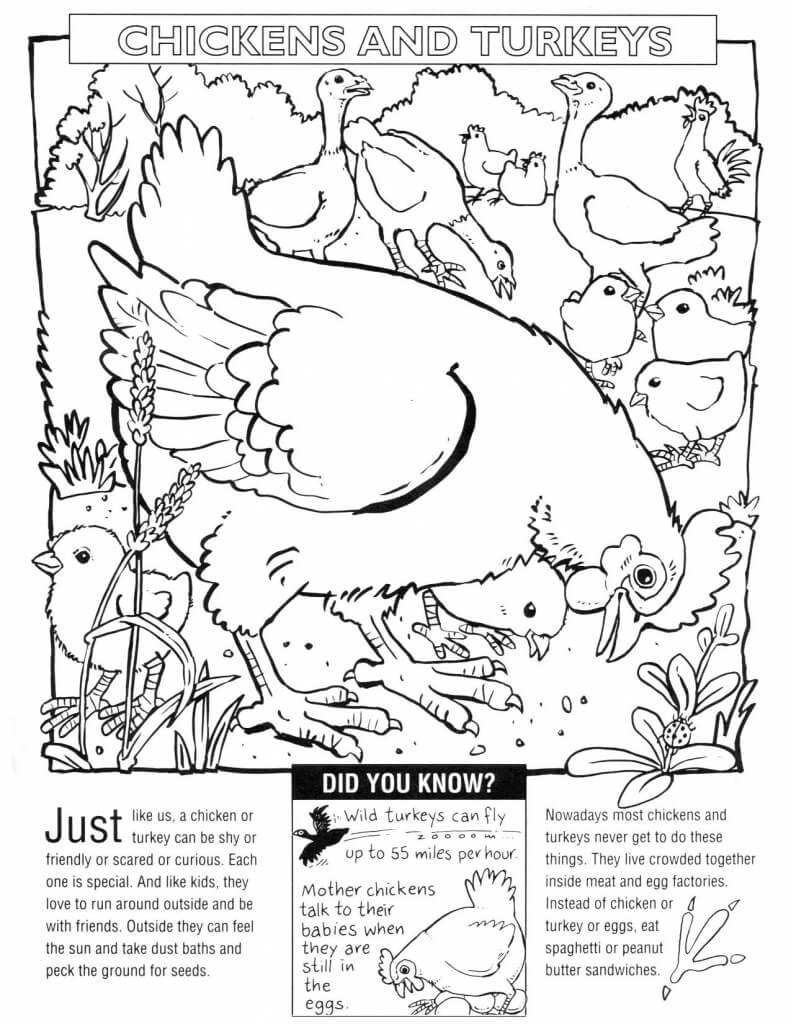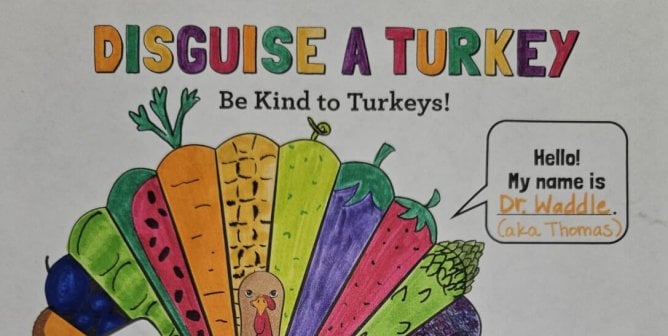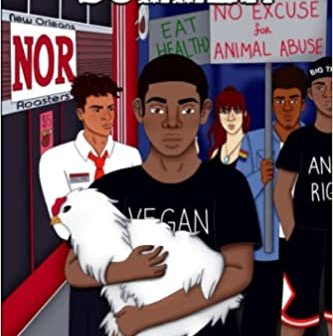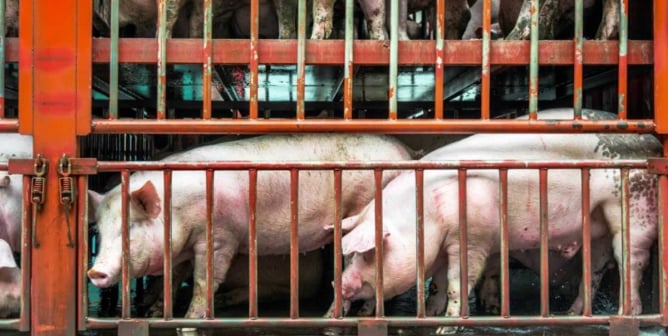Where Do Eggs Come From?
This lesson plan is designed to help teachers present animal rights issues to their students. If you’re an educator, please feel free to adapt this material to fit your needs, and contact us if you need help incorporating this activity into your curriculum.
Suggested grade levels: 3rd–5th grade
Objectives: To learn about the many characteristics that humans and chickens share, about chicken behavior, and about their lives on factory farms as well as to identify chicken-related vocabulary words
Chickens have feelings, unique personalities, favorite types of music, and families—proving that they’re a lot like us! Use this lesson plan to teach students more about chickens, and introduce your class to the ways in which chickens who are used for their eggs are treated.
Our Fascinating Feathered Friends
Print out copies of the below activity sheet, “Chickens: Our Fascinating Feathered Friends,” and have students use a dictionary to look up the definitions of chicken-related words in order to fill in the blanks:
Then, discuss the following facts about chickens with your students. If you’d like, provide them with some additional resources, such as books or webpages, for researching other facts to contribute to the list:
- Wild chickens came from the jungles of Southeast Asia. As jungle fowl, they developed a variety of adaptations to help them survive.
- When in their natural surroundings, chickens form friendships and social hierarchies, recognize one another, and love and care for their young.
- Just like dogs and cats, chickens have unique personalities: Some chickens enjoy rock music, while others prefer classical music, and some enjoy human company, while others may be very shy.
- Chickens are able to learn by watching the mistakes of others, and they’re very adept at teaching and learning new skills.
- Chickens have more than 30 distinct cries that they use to communicate with one another, including distinct alarm calls that let other chickens know when a predator is nearby.
- A mother hen will turn her eggs as many as five times an hour and cluck to her chicks, who will chirp back to her from inside their shells!
In addition to these facts, explain that chickens are one of most abused animals on Earth because of the way they’re treated in the food industry. Let your students know that although we often think that hens on farms are allowed to roam and lay eggs as they please, the majority of eggs come from factory farms, where chickens are debeaked and kept in battery cages. (Click here for some kid-friendly ways to explain battery cages, debeaking, and factory farms to your students!)
The Traits We Share
Write on the board, “What needs, actions, and emotions do we share with other animals?” and ask for volunteers to come up and add answers to the question under each of the categories. Some examples of needs include food, water, shelter, and companionship. Some examples of actions include raising families, grooming, playing, and exercising. Some examples of emotions include joy, happiness, fear, loneliness, and love.
For the next segment, use the video “Let’s Ask the Animals.” Ask students to write down any characteristics that we share with animals that were mentioned in the video but weren’t already written on the board.
Empathy Building
Show the first 12 minutes of “Let’s Ask the Animals,” stopping the video at the screen that reads, “Other Things We Have in Common.” At this point, discuss the use of battery cages, and ask students to imagine themselves as a chicken. Have them consider the following questions, and, if you’d like, have them write a paragraph about their feelings:
- How would you feel if you had to spend the rest of your life stuck between two people in the backseat of a car, never able to turn around, walk, or move?
- How would you feel if you were no longer allowed to bathe or shower?
- What would your life be like if you were never allowed to spend time with your friends, play outside, read, watch your favorite TV show, or do anything else that you enjoy?
- What would happen if your siblings or friends caught a cold and you were forced to stay next to them while they sneezed and coughed?
Explain to your students that chickens on factory farms experience life this way every day—they have no space to move around in, live in filthy conditions where disease is rampant, and are deprived of everything that’s natural and enjoyable to them.
Making Connections
Show your class the rest of the “Let’s Ask the Animals” video. The video mentions that some people don’t eat animals. Explain to your students why some people choose not to eat meat and why others also choose not to eat dairy products and eggs. Describe what foods vegans and vegetarians do eat, and discuss the reasons why one would choose to stop eating eggs. Explain that many of our everyday choices—including the choices we make about what we eat—can directly affect animals such as chickens. To wrap things up, distribute chicken coloring sheets to each student, have them color them in, and then display their colorful creations on the wall.
Want more activities to teach your students about the egg industry? Check out “A Chicken’s Life” to order our free comic books, and download the accompanying worksheet!
Become a TeachKind teacher and sign up for tips and more on humane education!
By submitting this form, you’re acknowledging that you have read and agree to our privacy policy and agree to receive e-mails from us.

